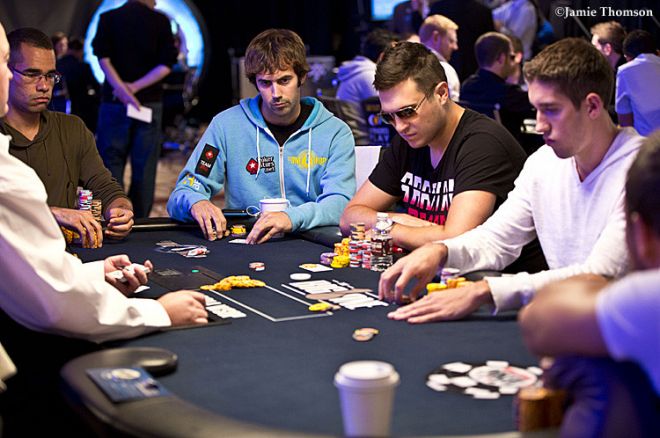The overall strategy in Texas Hold Em poker needs to be flexible. Tight and aggressive play are two entirely different strategies that utilise the same set of rules. Tight play, as the name suggests, focuses on you playing less hands as possible; you will often throw away a hand if you think there is a better hand out there. This form of play is best against other tight players in order to take advantage of them not being able to fold – but this form of play will not work in situations where you are beat. If you are not a very good Bola88 poker player, and you think that you are, you should consider whether its profitable to play loose or tight poker.

Loose Aggressive
When you play loose poker, you will often play more hands than you are liable to actually play. This is fairly common sense, really. If you have been watching a poker tournament you will have probably seen this many times – a good player chasing a draw, or chasing a hand (like pocket aces) way up the flop, only to throw his hand away on the turn or river. When you play loose poker, especially if you are betting high, you are always putting yourself in a position where you won’t have good cards come up. To coin the phrase “don’t punt with money you can’t afford to lose”, you really need to understand the difference between hand you are prepared to lose, and hand you are prepared to play. Cards that are playable in the early position at your table, will be less playable in the late position. The amount of hands you are prepared to lose, largely controls the amount of money you will actually lose at the table. So, its important to never be making moves with cards you are not ready to lose.
Tight Aggressive
To play tight aggressive effectively, you need to be exceptionally harsh with your hand selection. Don’t even think about playing a hand with anything less than a top pair, an ace, king or queen. Especially if your playing position is wet, you should be targeting any hand above a Jack and above 8 high cards. When you are targeting lower hands, especially in late position, you are icing on the cake, in a sense, to take control of the game. Usually, by tightening up, you will significantly reduce your losses, but not necessarily win as much. The concept of tight play is often misunderstood. It’s not necessarily a bad play to go all-in, especially when you are up against equally Tight players. As the button stages, the game becomes less crucial and that’s when you’ll want to be using your skills and not your chips as much. In the early position, you don’t necessarily want to be raising hands, unless you have eight or nine and above. If you have a pair of fours, a straight or a flush, use the pot odds to your advantage and go for it.
Final Table
Try and maintain your cool. If you are the Bubble player, don’t be so quick to forget how much chips you’re holding. For example, if you have $35,000 and the blinds are $5,000-$10,000, there is absolutely no reason to be playing very timidly. Remember, the blinds are coming from other players. There’s no reason to be timid and call the blinds without pushing your chips in. On the other hand, if you are the Small blind, the only thing you really want is to survive. Don’t dumb down a hand because you’re getting the “Nuts” or you’re looking at a possible double-up.
Hopefully, as we played, the blinds climbed up to $10,000 and there was approximately 25 players left. I will not get into specifics about when to play your cards or specific times, but rather the general advice being given. Most players asked if we were playing “according to the book”. Poker is the book, but not the book, it’s the rulebook. It’s about time you could look at the book in a little more detail as it may not be your game. According to David Sklansky, there are many weak players at the $10,000 level, but they do nothing on the bubble. According to David, when you get down to about $8,000, you are at the most mercy of the bunch. The majority of players here wouldn’t survive until the next hand. When you get down to $6,000, you are starting to see terrible players. They still have cash on the table, but it’s about to be gone.